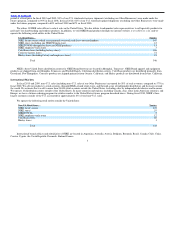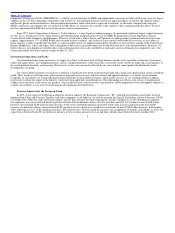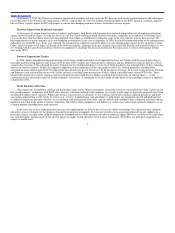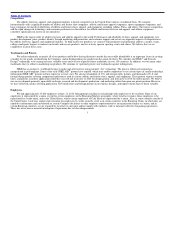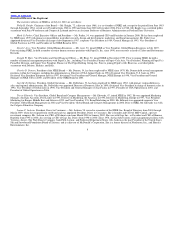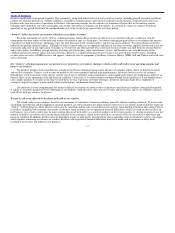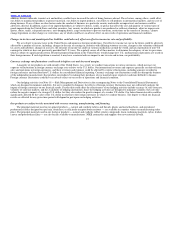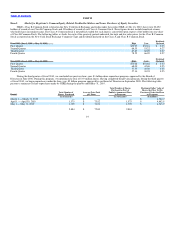Nike 2010 Annual Report Download - page 13
Download and view the complete annual report
Please find page 13 of the 2010 Nike annual report below. You can navigate through the pages in the report by either clicking on the pages listed below, or by using the keyword search tool below to find specific information within the annual report.
Table of Contents
growth of the overall athletic footwear, apparel, and equipment markets; intense competition among designers, marketers, distributors and sellers of athletic
footwear, apparel, and equipment for consumers and endorsers; demographic changes; changes in consumer preferences; popularity of particular designs,
categories of products, and sports; seasonal and geographic demand for NIKE products; difficulties in anticipating or forecasting changes in consumer
preferences, consumer demand for NIKE products, and the various market factors described above; difficulties in implementing, operating, and maintaining
NIKE’s increasingly complex information systems and controls, including, without limitation, the systems related to demand and supply planning, and
inventory control; interruptions in data and communications systems; fluctuations and difficulty in forecasting operating results, including, without
limitation, the fact that advance “futures” orders may not be indicative of future revenues due to changes in shipment timing, and the changing mix of
futures and at−once orders and order cancellations; the ability of NIKE to sustain, manage or forecast its growth and inventories; the size, timing and mix of
purchases of NIKE’s products; increases in the cost of materials and energy used to manufacture products, new product development and introduction; the
ability to secure and protect trademarks, patents, and other intellectual property; performance and reliability of products; customer service; adverse
publicity; the loss of significant customers or suppliers; dependence on distributors and licensees; business disruptions; increased costs of freight and
transportation to meet delivery deadlines; increases in borrowing costs due to any decline in our debt ratings; changes in business strategy or development
plans; general risks associated with doing business outside the United States, including, without limitation, exchange rate fluctuations, import duties, tariffs,
quotas, political and economic instability, and terrorism; changes in government regulations; the impact of, including business and legal developments
relating to, climate change; liability and other claims asserted against NIKE; the ability to attract and retain qualified personnel; and other factors referenced
or incorporated by reference in this report and other reports.
The risks included here are not exhaustive. Other sections of this report may include additional factors which could adversely affect NIKE’s business
and financial performance. Moreover, NIKE operates in a very competitive and rapidly changing environment. New risk factors emerge from time to time
and it is not possible for management to predict all such risk factors, nor can it assess the impact of all such risk factors on NIKE’s business or the extent to
which any factor, or combination of factors, may cause actual results to differ materially from those contained in any forward−looking statements. Given
these risks and uncertainties, investors should not place undue reliance on forward−looking statements as a prediction of actual results.
Investors should also be aware that while NIKE does, from time to time, communicate with securities analysts, it is against NIKE’s policy to disclose
to them any material non−public information or other confidential commercial information. Accordingly, shareholders should not assume that NIKE agrees
with any statement or report issued by any analyst irrespective of the content of the statement or report. Furthermore, NIKE has a policy against issuing or
confirming financial forecasts or projections issued by others. Thus, to the extent that reports issued by securities analysts contain any projections, forecasts
or opinions, such reports are not the responsibility of NIKE.
Our products face intense competition.
NIKE is a consumer products company and the relative popularity of various sports and fitness activities and changing design trends affect the
demand for our products. The athletic footwear, apparel, and equipment industry is keenly competitive in the United States and on a worldwide basis. We
compete internationally with a significant number of athletic and leisure shoe companies, athletic and leisure apparel companies, sports equipment
companies, and large companies having diversified lines of athletic and leisure shoes, apparel, and equipment. We also compete with other companies for
the production capacity of independent manufacturers that produce our products and for import quota capacity.
Our competitors’ product offerings, technologies, marketing expenditures (including expenditures for advertising and endorsements), pricing, costs of
production, and customer service are areas of intense competition. This, in addition to rapid changes in technology and consumer preferences in the markets
for
10





